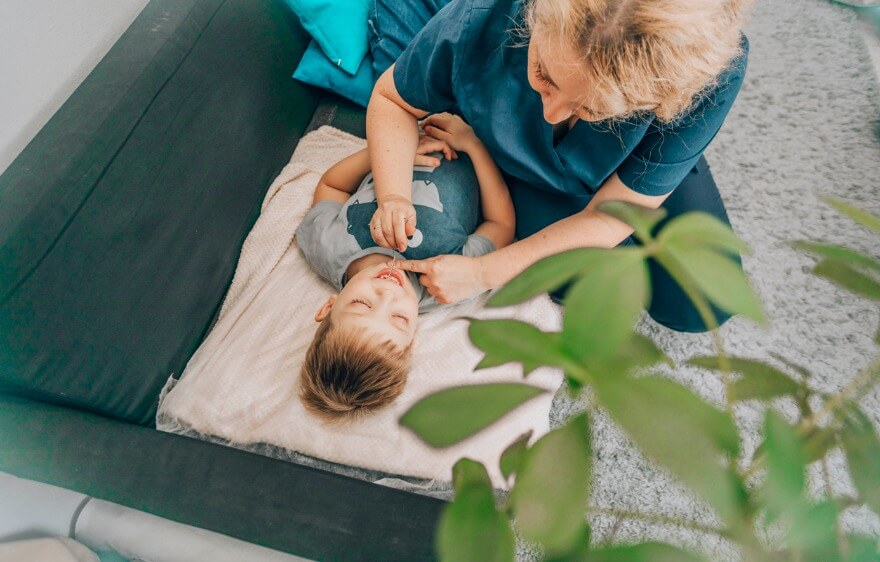When you find out that your loved one requires heart surgery, it can feel like your own heart has stopped, and everything moves in slow motion — especially if that loved one is a child or infant. But, once the surgery has happened and your little one is strong enough to come home, that anxiety and fear can shift and turn into a feeling of being overwhelmed. How long does recovery take? How can you make sure your child recovers appropriately? And, what can you do to promote the healing process?
Recovery Time
How long it takes your child to recover can vary based on age, medical history, and type of surgery. It can take anywhere from three to four weeks or six to eight weeks for larger surgeries. Some pain will be a normal part of the healing process, especially if your child had open-heart surgery — as the nerves may have been irritated or cut. Pain should subside after the second day and can be managed with prescribed or over-the-counter pain medications.
You may notice that your child’s behavior changes during their recovery — causing them to be irritable, cry, and even wet the bed. Try to support them during this time, and don’t worry about setting too many restrictions or being too strict about rules as long as they don’t hinder the healing process. You can slowly begin introducing those limits back to your child as they recover.
Wound Care
Your surgeon will provide you with a set of instructions post-surgery so that you know how to dress and clean wounds properly. Make sure you follow these instructions carefully. This ensures that you prevent infection and promote the healing process. Signs of infection include:
- Redness
- Swelling
- Tenderness
- Warmth
- Drainage
Since Steri-Strips can’t be soaked in water, your child should avoid baths until directed by their provider. Showers and sponge baths are preferred. Wounds should continue to be cleaned and dressed until the scab has fallen off. But, a scar should still be covered while your child is in the sun until it’s no longer pink. This ensures that the new skin can heal properly and isn’t damaged by UV rays. Also, make sure to apply sunscreen to new scars as they continue to heal before your child leaves the house.
Activity
The activity level of your child may depend on their age. For infants, it’s important to keep crying to a minimum for three to four weeks. While crying is inevitable and a natural way for them to express themselves or their discomfort, you can soothe them by following the recovery instructions provided by the surgeon and keeping calm around them. You’ll also need to support your infant’s head and bottom for the first four to six weeks.
For the first four weeks after surgery, your child should avoid any activity that could result in a fall or a blow to the chest. Your child should stop any activity if they become tired. And, they’ll need to be cleared by a doctor before returning to any sports — including bicycling, skateboarding, roller skating, and swimming. If they had an incision on the breastbone, your child should limit or be careful when using their arms and upper bodies for the first six to eight weeks. Until they’re fully recovered:
- Don’t pull or lift your child by the arms or from their armpit area — scoop them up instead
- Prevent your child from doing anything that involves pulling or pushing with their arms
- Keep your child from lifting their arms above their head if possible
- Prevent your child from lifting anything heavier than 5 pounds
Diet
The primary goal is to make sure your child is receiving enough calories to promote healing, as some children lose their appetite after surgery. You can help by offering smaller meals or snacks, but more often than normal. You should also make sure they are getting plenty of fluids — at least six to eight glasses of water per day.
Most infants can have as much formula or breast milk as they want. But, in some cases, your provider may want to limit their intake at first. Regardless, you should limit feedings to 30 minutes. Talk to your provider if you need assistance adding extra calories to your child’s diet.
Slowly begin introducing a nutritionally rich diet back into the routine of toddlers and older children as they gain back their appetite. Always talk to your provider if you have concerns about your child’s diet or eating habits.
School
Your provider will decide when it’s appropriate for your child to return to school or daycare. This can take anywhere between two to four weeks and is usually discussed at their follow-up appointment.
Follow-Up Appointments
After your child has been discharged, they will need to see various doctors to ensure they are healing correctly and that no complications from the surgery have occurred. One week after being discharged, you’ll have a follow-up appointment with the cardiologist. Two weeks after discharge, you’ll see the cardiologist again for a check-up and an x-ray to ensure everything is healing well. Three to four weeks after discharge, you’ll meet with the pediatrician to monitor their progress and do a routine check-up — including immunizations, although some may require waiting two to three months after discharge.
When to Call a Doctor
It’s important that you monitor your child for any changes or side effects during the recovery process. Call the doctor immediately if your child experiences:
- Fever, nausea, or vomiting
- Chest pain or other pain (especially after the second day)
- Redness, swelling, or drainage from the wound
- Difficulty breathing or shortness of breath
- Puffy eyes or face
- Tiredness all the time
- Bluish or grayish skin
- Dizziness, fainting, or heart palpitations
- Feeding problems or reduced appetite
How Home Health Care Can Help
Caring for your child after heart surgery can be tough — especially if you have other children in the household requiring your attention. In these cases, home health care can provide you some relief. During your child’s recovery, a skilled nurse will visit your home to change bandages, monitor your child’s progress, address any concerns you may have about their appetite or recovery plan, and more. This gives you time to run errands, take a nap, or provide attention to your other children.
Contact Care Options for Kids For Pediatric Home Health Care
It can be hard to balance your time between work, home, and caring for a child. That’s why our team of skilled professionals at Care Options for Kids is here to help.
Our home health care services offer support in the comfort of your home. We refer loving and competent nurses to provide customized care for families — from a few hours a day to around-the-clock supervision. Contact us directly to speak with a home health care professional or request a free in-home assessment. Together we can determine the best plan of action to keep your loved ones happy and healthy.
If you are considering pediatric home health care services, contact the caring staff at Care Options for Kids. Call today at (888) 592-5855.






